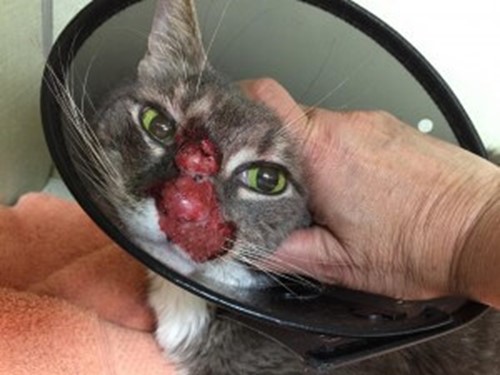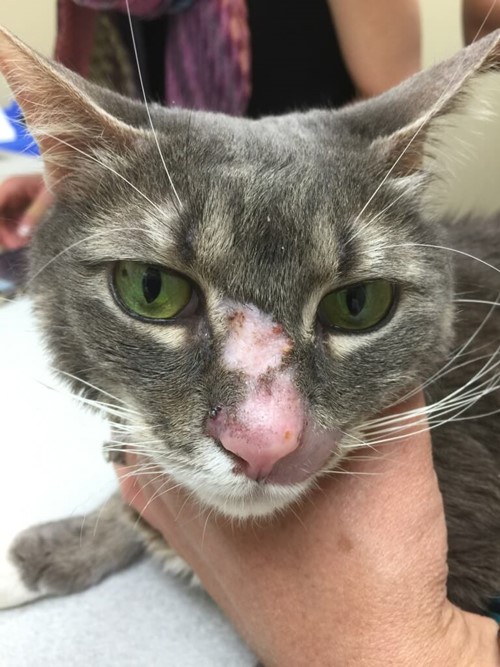Feline Rhinotracheitis typically manifests in cats as an upper respiratory disease, usually accompanied by ocular signs and is caused by a herpes virus (Feline herpes virus-1). However, infection can manifest with skin lesions in the absence of respiratory signs and ocular lesions. Skin lesions usually follow the path of the trigeminal nerve on the haired skin of the face and nasal planum. The pinnae, paws, and ventrum may be affected. Lesions appear as erosions, ulcerations and crusts with erythema and significant swelling. Crusting of the eyelids and ulcerative to interstitial keratitis may be seen.
Differential Diagnosis
Differential diagnoses in the absence of respiratory signs include mosquito bite hypersensitivity, eosinophilic plaques, calici virus dermatitis, squamous cell carcinoma, drug reaction, erythema multiforme, pemphigus foliaceus and lupus erythematosus. Diagnosis is via history, clinical signs, viral isolation from oropharyngeal swabs, fluorescent antibody or PCR techniques from conjunctival smears that detect the rhinotracheitis viral antigen and dermatohistopathology. Histology shows an ulcerative and necrotic dermatitis with mixed inflammation often containing numerous eosinophils.
Feline Herpes Treatment
Inclusion bodies may be identified. Treatment involves any secondary bacterial infection, good hygiene, ophthalmic drops as indicated (trifluridine, idoxuridine) and systemic antiviral medications (lysine, famciclovir, alpha-interferon). Topical imiquimod cream (for the treatment of human genital warts) may be effective.


Pre-treatment and post-treatment with famciclovir.

